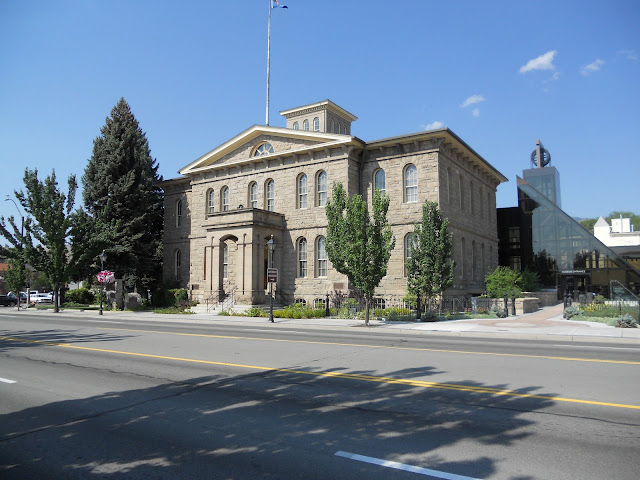We have enjoyed some wonderful scenery, a realistic replica of a 13th century Tuscan castle winery, getting to visit with a long-time friend of Sandy's in Reno and some wonderful food and wines.
While we were in Napa we decided to do a "touristy thing" and go visit Castello de Amorosa. The castle cotains121,000 square feet spread among 107 unique rooms on 8 levels -- four of which are underground. It really is a beautiful place. What contributes to the beauty of this place is that it was built following old world techniques with a lot of hand methods of construction. For example, instead of commercially available mortar they mixed lime and sand to cement bricks and stones in place.
So, here is the castle
With a real drawbridge over a moat.
And a tower with parapets and slotted windows for archers.
A courtyard, and the most important ---
A dragon. The blacksmith who made all metal hinges, railings and other iron adornments, made this and several other dragons by hand.
And chickens and roosters to help keep the food pantry stocked.
And since the castle is a fully functioning winery, here are some of the 30 acres of vines.
Here are some grape clusters almost ready for picking. The winery produces only 15,000 cases of wine each year which -- according to the young man who poured samples for us -- is a mere drop in the bucket.
And, keeping with the Tuscan theme, there are plenty of olive trees.
######################################################
As we were leaving Calistoga we came across this whimsical piece of artwork sponsored by the Calistoga Mineral Water Company.
######################################################
Then we spent a couple of days in Reno and had the chance to visit with Linda McNiff, a good friend of Sandy's from years ago in Chicago. I am married to the luckiest woman. She can walk into a casino and turn a few dollars into many. Especially sweet was the fact that Sandy converted the free $10 of money the hotel gave to us for gambling into $54. The night before she walked away with $80. I, on the other hand, gave the Pepper Mill Casino $10. All in all they lost money on the Stoltzes.
 Today we visited the Nevada State Museum and the old Capitol building, both of which are in nearby Carson City.
Today we visited the Nevada State Museum and the old Capitol building, both of which are in nearby Carson City.
The museum is housed in the old Carson City Mint (above). Today it houses a treasure trove of Nevada history. Included is a below-ground replica of part of the interior of The Comstock Lode where I nearly got lost because it had so many passages and tunnels. Sandy and Linda wisely decided to let me go visit the mine on my own. There were so many neat exhibits that I could not possible do the museum justice, so here are just three photos.
This is one of the original coin stamping machines. Museum employees operate it the first Friday of each month and stamp non-legal tender "coins" for visitors to purchase. The machine could make 100 silver dollars per hour.
A collection of pure gold and silver coins minted at the Carson City Mint is on loan from Wells Fargo Bank. A few of these coins are so rare that they could easily finance your retirement.
After lunch we walked through the old Nevada capitol building. It is a beautiful Victorian structure that has been totally renovated into a classic yet fully functioning building for many state government offices.
Looking ahead....
On our way home we are going to go a little bit out of our way to visit an RV dealer in Lexington, SC. This dealer has in his inventory a similar model of a travel trailer we might buy next spring so that when we are on the road, we can be actual RVers. To say nothing of not having to sleep in a different bed every few nights.
For those of you who are interested you can see this trailer at:
http://www.goevergreenrv.com/products/115/Ascend
The specifications are very impressive.
We expect to be home August 21. My next blog entry will be in early 2013. Bye for now. It's been a great 3 months on the road.























































